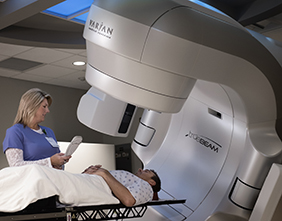What is PT and What to Expect
posted on: 1/31/2019 5:21:20 PM
What is PT and What to Expect
-Tiffany Steinmetz, PT, DPT

You visit your doctor and at the end of the visit you hear him / her mention a referral to PT.
You are in the hospital and your nurse informs you the doctor has ordered PT.
Your child goes for their wellness visit and the pediatrician recommends PT.
You hear a friend or colleague mention that they are getting PT.
What is PT?
PT in the medical community stands for physical therapy, no - not pain and torture contrary to popular belief. According to Merriam-Webster, physical therapy is “therapy for the preservation, enhancement or restoration of movement and physical function impaired or threatened by disease, injury or disability that utilizes therapeutic exercise, physical modalities, assistive devices and patient education and training.” This might sound a bit complex.
Let me give you a more in-depth look. Physical therapy is a holistic treatment that has been around since the early 1900s with the American Physiotherapy Association, beginning in 1921-1922. Treatment is based on the presentation of a person as a whole. Most impairments of or from the body affect multiple systems or areas. Physical therapy is a way to treat some forms of disease, injury or deformity either as a complement to or many times instead of prescription medications or surgery. Additionally, physical therapy is often appropriate to treat individuals after surgery with goals to reach their maximum potential of rehabilitation or to resume their baseline function.
So what does that look like?
If you see your provider because of a musculoskeletal condition and / or pain, they will often refer you to outpatient PT. In this case, physical therapy would be utilized to evaluate the root source of pain or limitation. A treatment plan would then be rendered in order to fix the ailment, better manage symptoms to prevent further injury or help determine if different / additional treatment is needed. At times, this process may be initiated after a hospitalization, in which additional or different problems may be addressed, such as: balance, gait or dizziness.
If you are admitted to the hospital and PT has been ordered by a provider, a physical therapist will visit you while you are an inpatient to evaluate your functional mobility. The PT wants to see how well you can get in / out of a bed or chair, ambulate and possibly negotiate stairs - if applicable to your personal home setup. How much help do you need to do these things? Do you have help available when you go home? This evaluation is helpful in determining the best and safest option for discharge, as well as if any assistive devices would be recommended. Sometimes after an injury or disease, it is appropriate to continue being seen for therapy while admitted in the hospital and then while at a skilled nursing facility, an inpatient rehab, by home health or possibly on an outpatient basis. This is dependent upon current functional mobility skills and the amount of assistance needed for those skills, prior level of functioning and home setup, as well as your admitting diagnosis and comorbidities. At a skilled nursing facility, patients are put into a category that determines the amount of therapy that can be safely tolerated and beneficial to the patient, factoring in the variables that were mentioned previously. If you are admitted to an inpatient rehab facility, you will receive three hours of therapy per day. It is very important that you are medically and physically able to participate in the expected duration and frequency. If you are able to safely be discharged home, but continue to require skilled services without being appropriate to travel to an outpatient clinic, a home health therapist will come to your home to evaluate and provide treatment deemed necessary to meet your mobility goals.
If your child’s pediatrician or primary care provider recommends physical therapy, it may be for many different reasons reliant upon their age and presentation. Pediatric physical therapists often see infants if they present with any muscle tightness or preferred postural positioning (typically seen with the head and trunk), an abnormal head shape or if they are demonstrating a delay in their gross motor skills. Additionally, if a child of any age has been given a diagnosis that may affect their gross motor skills or development, the child will likely be referred to physical therapy. Pediatric physical therapy may be ongoing and years in duration or it may be short and specific depending on the reason for referral.
With all of the information provided above, it is also important to note that physical therapy is a personalized plan that incorporates your related personal goals. This is part of treating each individual patient as a whole. Physical therapy is widely utilized across the world and has known benefits to help reduce or eliminate pain, recover from an injury, improve mobility, avoid surgery, improve balance and prevent falls, as well as manage certain medical conditions and age-related issues. The next time you see your provider ask if a physical therapist can help your problem. If you’re admitted to the hospital and a therapist comes to see you, know that we want to help you get better as safely as possible. If you have questions about your child’s development, ask your child’s provider if physical therapy would be helpful.
We would also love to answer any questions you may have. Give our Rehabilitation Services office a call at 419-226-5045, and let us show you “what great care looks like!” Stay tuned throughout 2019 for more informative topics from our rehab team members that may directly interest you!
References
Neil, A. (2017, January 10). APTA History. Retrieved from http://www.apta.org/History/
Physical Therapy. (n.d.). Retrieved from https://www.merriam-webster.com/dictionary/physical therapy
Website





